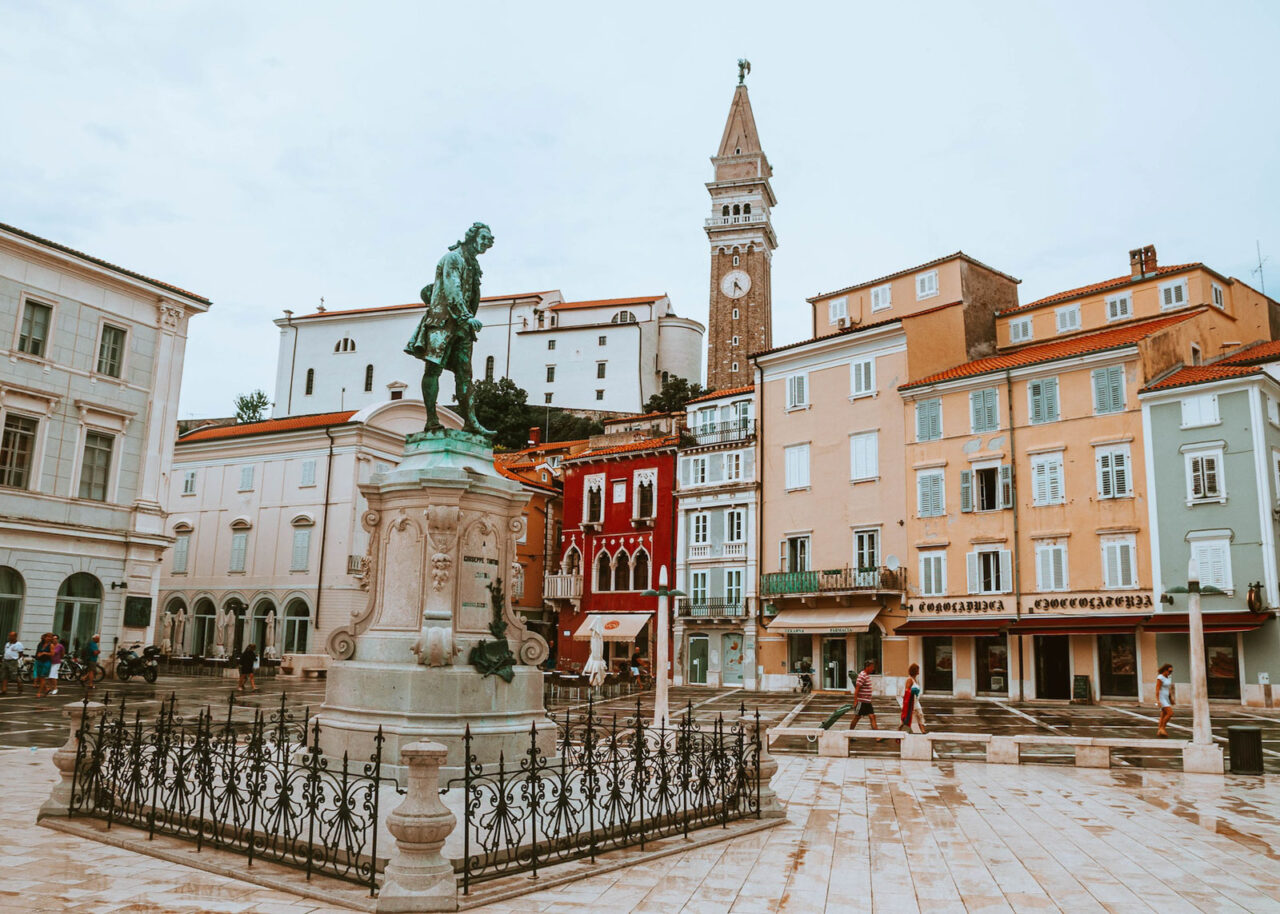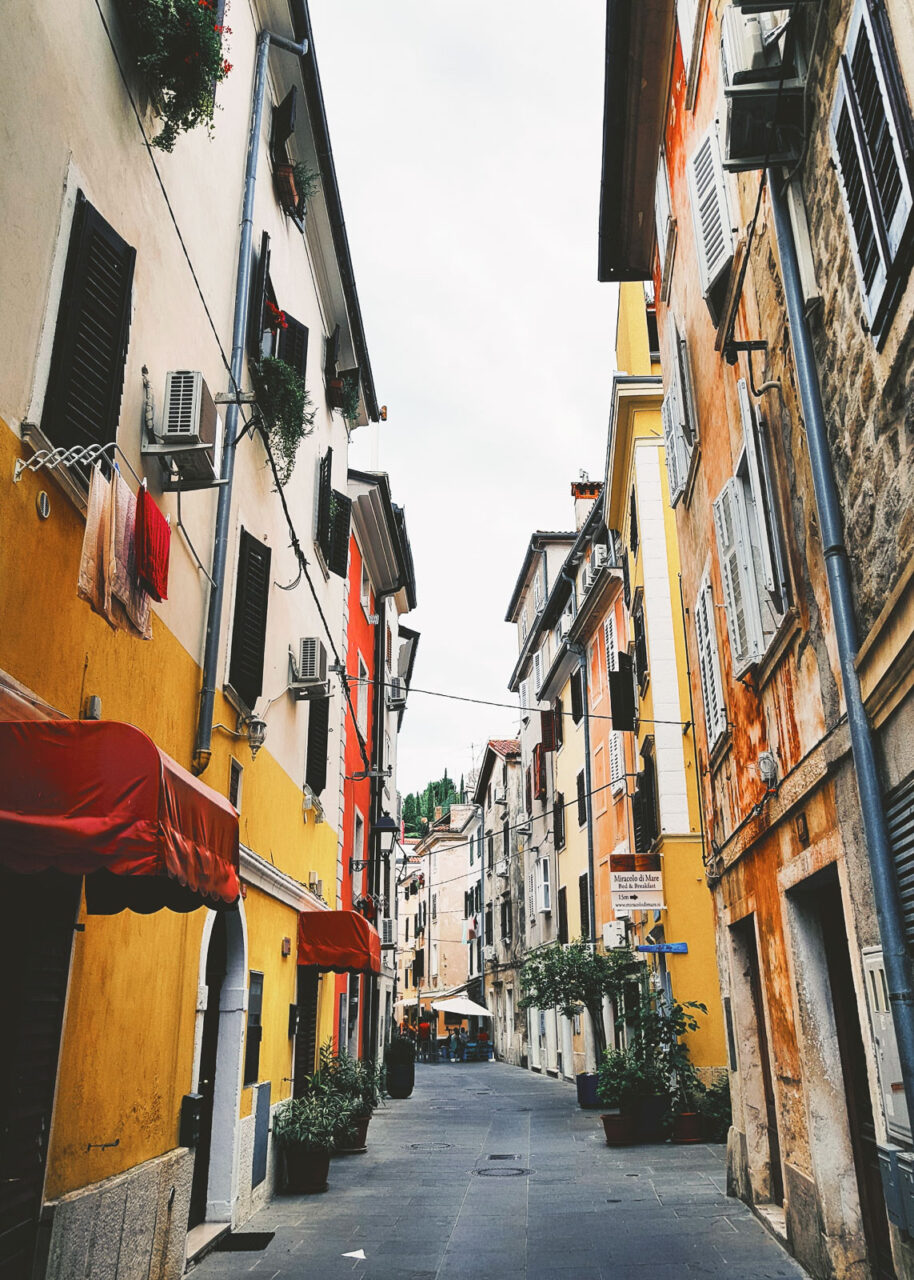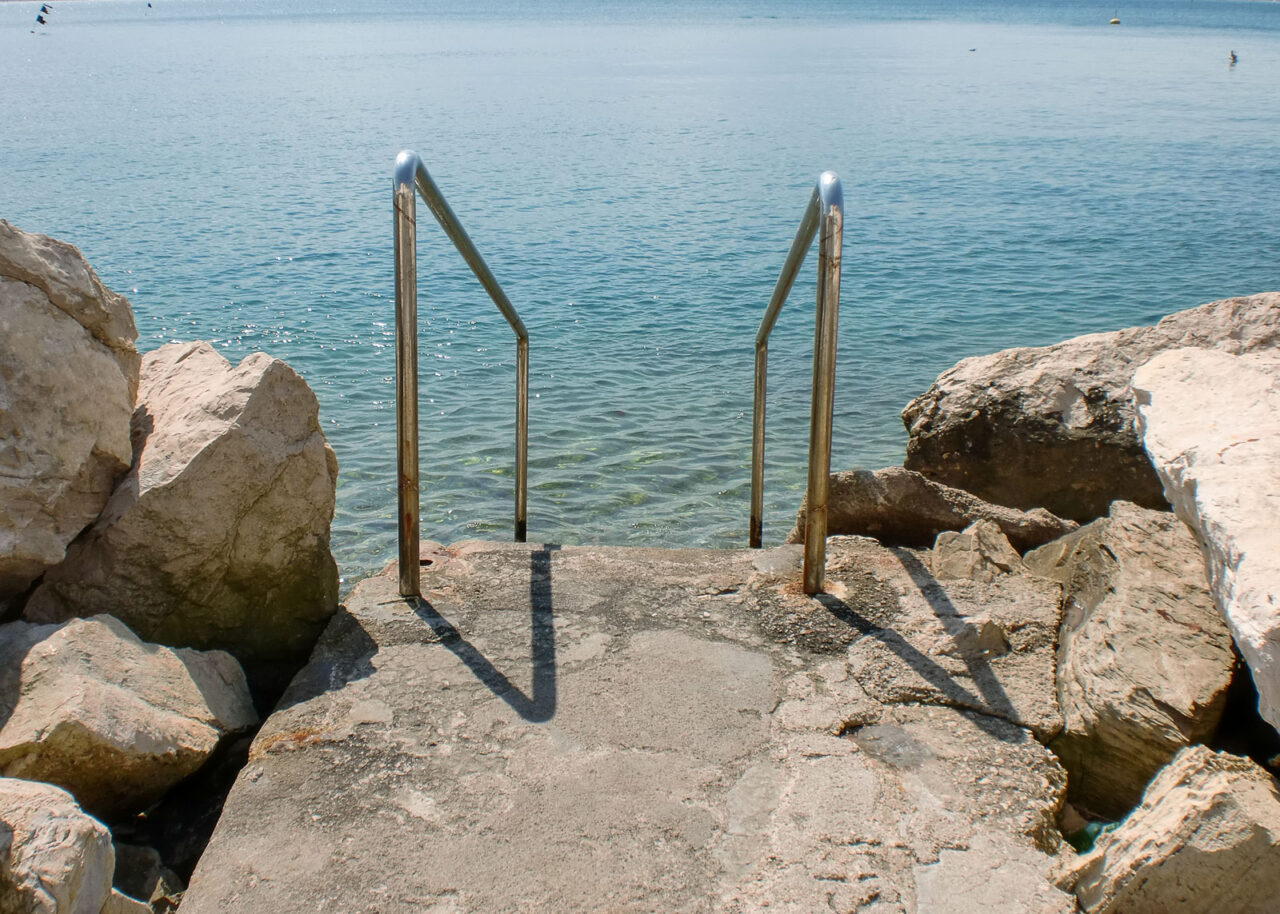
Heads up: some of the links on this site are affiliate links. If you click and make a booking or purchase, I’ll make a commission (at no extra cost to you). I partner with companies I personally use and the $$ goes towards creating more awesome, free travel content.
Piran, Slovenia is a picturesque little fishing village on the Slovenian Coast. Bear in mind, that when I say “coast”, Slovenia has a rocky shoreline, so you’re more likely to be enjoying a seafood lunch next to a harbor than topping up your tan on a golden beach. Except for in the glamorous resort of Portoroz, that is, which has a man-made, sandy beach.
Piran turned out to be the ideal base for us to explore the rest of Slovenia. The whole country is pint-sized, so any town in Slovenia is “convenient”, but Piran is truly my favorite town on the ocean. It’s because the town is genuinely pretty and relaxing. It consists of a main square, a harbour filled with fishing boats, a jetty and a promenade lined with restaurants.
Where is Piran, Slovenia?
Piran is located on a headland in the southwest corner of Slovenia, close to the border with Croatia. In fact, my friends and I rented a car from Piran and took a day trip to the town of Rovinj, which lies in the northern part of Croatia.
How to Get to Piran

Getting to Piran from Ljubljana
If you’re coming from Ljubljana, you can either drive or take the bus. The bus can take anywhere between 2 hours 20 minutes and 3 hours, and leaves from Ljubljana train station. It makes a few stops along the way, but the scenery is very beautiful.
If you’re renting a car, then you’ll want to follow the E61 south. Keep driving along this road until you reach the A1, which will take you towards Koper. You’ll then follow the H5 and H6, which then merges to the 111. Eventually you’ll spot the signs for Piran.
From Trieste
If you’re traveling through Italy, you can catch a train to Trieste.
The Arriva bus from Trieste to Piran runs Monday to Friday, costs €8 one-way, and takes around 1 hour 15 minutes. If you’re visiting Piran on a weekend then you’ll have to catch the Flixbus to the neighboring town of Portoroz, then catch a taxi local bus to Piran. It takes roughly 5-10 minutes to travel between Portoroz and Piran.
Piran History & Introduction

- Piran was first settled during the days of the Roman empire, around 178 and 177 BC.
- For 500 years, between 1283 to 1797, the town was part of the Republic of Venice.
- The town later fell into the hands of the Austrian empire, followed by the Napoleonic Empire.
- At the end of the 19th century and the beginning of the 20th century, Piran was an Austro-Hungarian town. 80% of the population was ethnically and culturally Italian though, and Italian was the dominant language.
- After the First World War, the town was ceded to Italy, but when the Axis powers were defeated in World War II, Piran was assigned to the Free Territory of Trieste, under Yugoslavian administration.
- The town was annexed to Yugoslavia in 1954, and became a part of independent Slovenia in 1991. Today, the main language spoken in Piran is Slovene.
Things to Do in Piran
Piran is small and easily walkable, so it’s not really necessary to have an itinerary here, but here’s a quick overview of things to do in the town.
Tartini Square

Tartini Square is Piran’s main square, named after Guiseppe Tartini, an Italian composer and violinist. In the center of the square stands a statue of him, which was commissioned for the 200th anniversary of birth.
The square is flanked by numerous pastel-colored buildings, although only one retains its original exterior; the gothic Venetian house.
The site was once a dock for small vessels, which became surrounded by important buildings and palaces during the Middle Ages. However, it was eventually buried because of sewage issues, and in 1894, a new square was erected in its place.
St. George’s Parish Church

Standing on a hill above Piran, the beautiful church of St. George is one of Piran’s most prominent landmarks and can be seen from all over town. This Roman Catholic church Venetian Renaissance architectural style and was constructed between the late 16th and early 17th centuries. Its facade is based on facades created by Andrea Palladio, while the bell tower is based on the campanile of San Marco in Venice.
Climb the Bell Tower

If you want to burn off some calories, climb to the top of the bell tower of St. George’s Parish church. This free-standing bell tower towers 46.5m high over the town, offering panoramic views of Slovenia’s Istrian coastline. Built in 1609, the tower has 147 stairs and is modeled on the San Marco Campanile in Venice.
The top of the tower houses four bells and has a 3.6m weathervane in the form of the Archangel Michael. The climb takes around 15-20 minutes depending on your fitness level, so make sure you bring some water!
Čokoladnica Piran
The first is to visit the chocolate shop in the main square. “Why Slovenian chocolate?” you might say. Well, this chocolate has a twist- it has crystals of salt in it from the salt pans nearby. To some the idea of salty sweet might sound positively disgusting, but it’s actually surprisingly good. Salt and chocolate shouldn’t go together, but somehow it works. Sort of like tasting raw cake mix when you’re baking.
Da Noi Cafe Bar

If you’re looking for a decent breakfast spot, definitely visit Da Noi Cafe Bar on the oceanfront. The staff treated us so well there and they had free Wi-Fi, so it was a great spot to have morning coffee and a sandwich whilst catching up on emails. In the evening, our favorite waiter Bostjan gave us free shots which were the same color as the green slime in Ghostbusters. They were strong enough to put hairs on your chest too.
Walk Around the Old Town

Eat a Seafood Dinner

Thirdly, make sure you have a seafood dinner whilst you’re there. Any of the restaurants on the main strip next to the water are fantastic. They all serve similar menus with grilled prawns, calamari, risotto, pasta, fresh fish and mussels.
Walk Around the Harbor

Take a Boat Trip

Is Piran Worth Visiting?
Yes, Piran is definitely worth visiting! With its medieval walls, scenic harbor and colorful main square, Piran is one of the prettiest places in Slovenia. Out of all the things to do in Slovenia, Piran was my favorite by far. I love being by the ocean, and I love seafood, so it was nice to feel the salty sea breeze on my face.
Can You Swim in Piran?

Yes, it’s possible to swim in Piran! In the center of town you’ll see some stairs that lead directly into the Adriatic Sea. While there’s no beach, there are concrete sunbathing platforms where you can soak up the sun. And if you want to lay on some sand, consider heading over to Portoroz, which has a man-made beach.
How Long Do You Need in Piran?

You could easily explore Piran in one day, but I’d suggest you spend about three days here. This way you can relax, unwind and explore the neighboring coastal towns of Koper and Izola. Slovenia’s coastline may only stretch for 47km, but it’s very picturesque and provides a bit of a change from Slovenia’s mountain areas.
A Final Word…
Piran is a small town and if you stay there a few nights, you’ll know the place like the back of your hand. Our hostel, Alibi Hostel, was located in the maze of quaint backstreets just off the main strip. It’s not a party town and if you want to go clubbing you have to venture to the nearby ‘glitzy’ town of Portoroz. Piran is a place to enjoy some nice lunches in the sunshine and watch the sunset with a beer in hand.



